MSI A88XM-E35 Motherboard Review: Micro-A88X for $68
by Ian Cutress on April 3, 2014 11:59 AM ESTScientific and Synthetic Benchmarks
2D to 3D Rendering –Agisoft PhotoScan v1.0: link
Agisoft Photoscan creates 3D models from 2D images, a process which is very computationally expensive. The algorithm is split into four distinct phases, and different phases of the model reconstruction require either fast memory, fast IPC, more cores, or even OpenCL compute devices to hand. Agisoft supplied us with a special version of the software to script the process, where we take 50 images of a stately home and convert it into a medium quality model. This benchmark typically takes around 15-20 minutes on a high end PC on the CPU alone, with GPUs reducing the time.
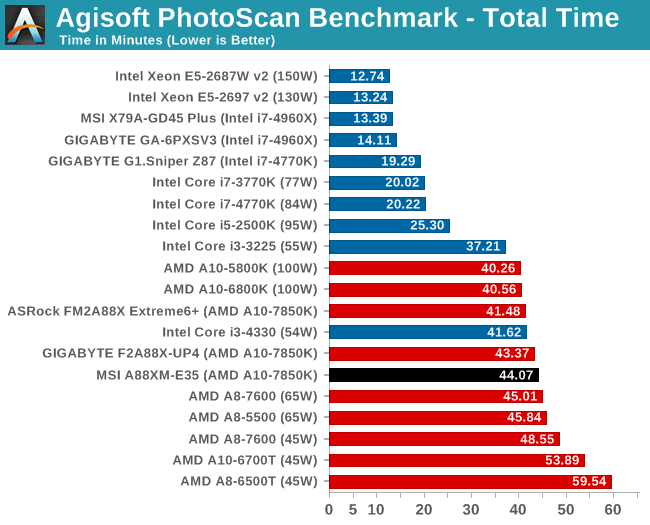
Console Emulation –Dolphin Benchmark: link
At the start of 2014 I was emailed with a link to a new emulation benchmark based on the Dolphin Emulator. The issue with emulators tends to be two-fold: game licensing and raw CPU power required for the emulation. As a result, many emulators are often bound by single thread CPU performance, and general reports tended to suggest that Haswell provided a significant post to emulator performance. This benchmark runs a Wii program that raytraces a complex 3D scene inside the Dolphin Wii emulator. Performance on this benchmark is a good proxy of the speed of Dolphin CPU emulation, which is an intensive single core task using most aspects of a CPU. Results are given in minutes, where the Wii itself scores 17.53; meaning that anything above this is faster than an actual Wii for processing Wii code, albeit emulated.
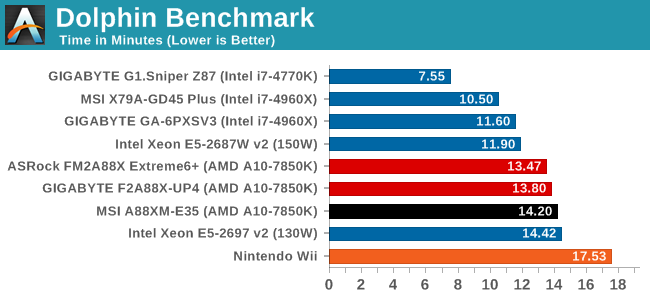
Point Calculations – 3D Movement Algorithm Test: link
3DPM is a self-penned benchmark, taking basic 3D movement algorithms used in Brownian Motion simulations and testing them for speed. High floating point performance, MHz and IPC wins in the single thread version, whereas the multithread version has to handle the threads and loves more cores.
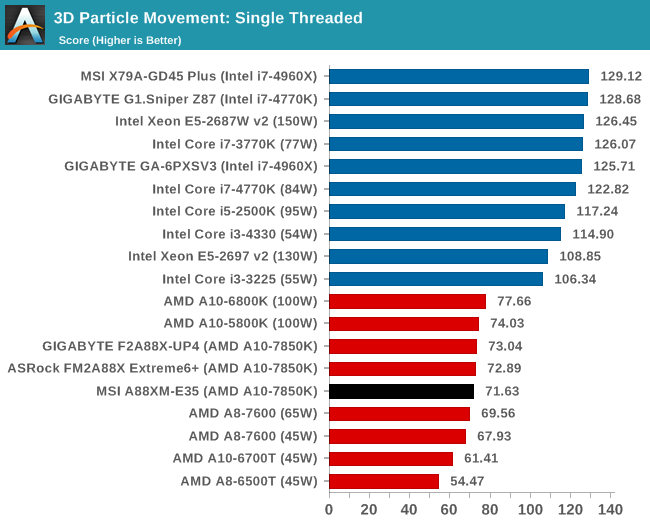

Encryption –TrueCrypt v0.7.1a: link
TrueCrypt is an off the shelf open source encryption tool for files and folders. For our test we run the benchmark mode using a 1GB buffer and take the mean result from AES encryption.
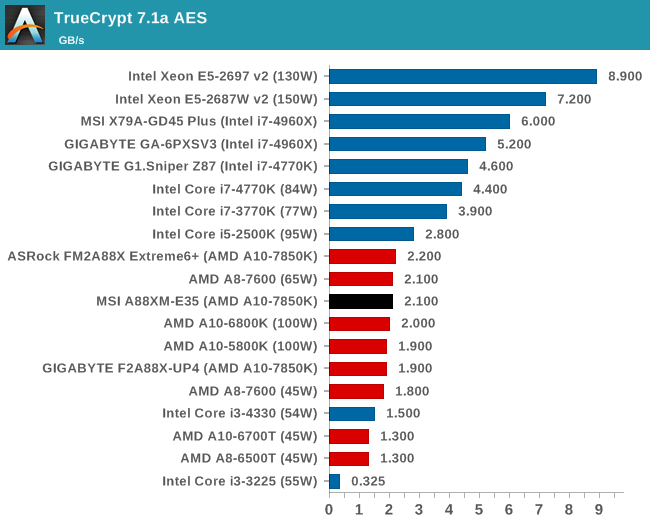
Synthetic – 7-Zip 9.2: link
As an open source compression tool, 7-Zip is a popular tool for making sets of files easier to handle and transfer. The software offers up its own benchmark, to which we report the result.
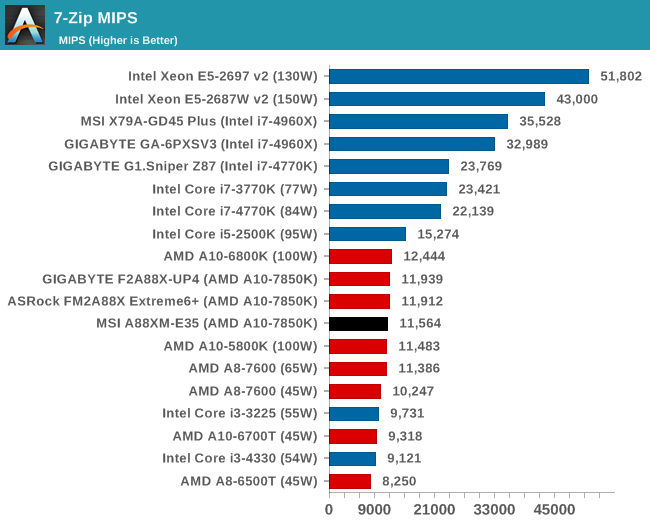










27 Comments
View All Comments
khanov - Thursday, April 3, 2014 - link
Also, PS/2 is interrupt-driven, USB requires the CPU to poll the ports. The effect of polling is to use/waste CPU cycles checking if the mouse has moved or a key has been pressed.Interrupt-driven I/O is superior, as it does not waste CPU cycles. The CPU only services the interrupt handler (keyboard/mouse code) when you press a key or move the mouse.
It may be 2014, but PS/2 is a better way to connect both mouse and keyboard than USB. I wish all vendors put both PS/2 ports on all motherboards.
frewster - Friday, April 4, 2014 - link
I seriously doubt any computer from this decade or even the past decade is noticeably slowed down by polling the USB ports.boot318 - Friday, April 4, 2014 - link
I agree. He should just state that he wants the connections, because otherwise, they should be dead.Powerlurker - Friday, April 4, 2014 - link
My assumption is that PS2 ports are still used in industrial computing. They are also a little bit cheaper. Last I checked, HP would cut about $5 or so off the price if you went with a PS2 keyboard over USB. If you're a corporate purchasing agent buying 1000 systems, that's an nontrivial amount of cash with practically no downside.dananski - Friday, April 4, 2014 - link
N-key rollover is why I'd want ps2, but more likely it's that if they're buying a budget board, they might be reusing a really old keyboard.sfuzzz - Tuesday, April 8, 2014 - link
It was an half-joke. No, I think the real reasons are that the PS/2 controller is integrated and fully functional on all chipsets and PS/2 keyboards are guaranteed to always work, especially on BIOS. Call it a failsafe solutionVoldenuit - Thursday, April 3, 2014 - link
Thank you for reviewing a motherboard with a price that's not 3-digits, Ian!LucinaHSacco - Thursday, April 3, 2014 - link
So how about an AMD Kaveri-supporting A88X motherboard priced at just £40? That would surely get some attention, right? The MSI A88XM-E35 is that board and we have it under the spotlight today. http://is.gd/mGuvSUSquattingDog - Thursday, April 3, 2014 - link
Ian, it is "bear that in mind" eg to keep in mind, not "bare that in mind" (naked in mind?! Hate to nitpick but this is at least the second article on this site I've seen it in.Also as other commenters have mentioned what is going on with the overheating of the VRMs? Specific chips or revisions only if all new chips are causing this?
zodiacsoulmate - Thursday, April 3, 2014 - link
The first thing I noticed when taking the motherboard out of the anti-static bag was the lack of a power delivery heatsink.What heatsink is that???????????
Isn't it the little blue thing on the mobo?